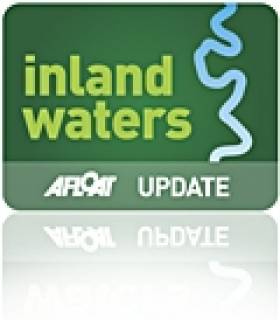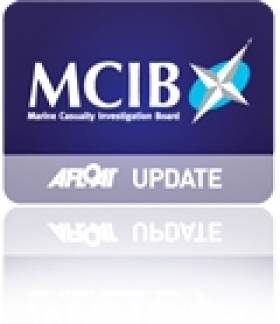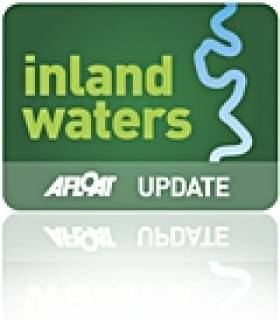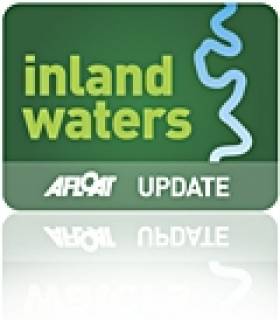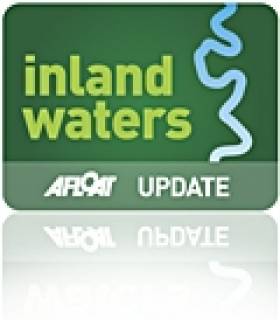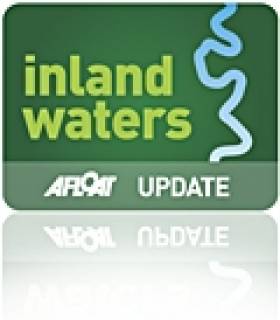Displaying items by tag: Waterways Ireland
Reported Floating 'Raft' Hazard on Lough Derg
A makeshift raft, of wooden construction, floating low in the water has been reported in the vicinity of the entrance to the Scarriff river on the inland waterways.
Owners are requested to keep a sharp look-out and proceed at slow speed when in this area of the navigation.
Consultation on Proposed Waterways Bye Laws Sought
Waterways Ireland has commenced the first Phase of a Public Consultation programme on proposed new Bye-laws for all seven inland waterways under its remit. Bye-laws facilitate the management of a waterway, clearly outlining the roles and responsibility of Waterways Ireland and all the people involved in using the navigation, whether for recreational or commercial purposes.
It is intended that the proposed new Bye-Laws will reflect the breadth of modern day use of the waterways; bringing consistency in navigational rules across the waterway network. The new Bye-laws are also expected to facilitate waterway users understanding of their responsibilities in sharing this multi-functional environment. Whether the waterways users are in Killaloe (Shannon Navigation), Coleraine(Lower Bann), or Tullamore (Grand Canal) the same navigational rules will apply. Due to important differences in the enabling legislation in both jurisdictions as well as legislative and court procedures, Waterways Ireland will introduce the new Bye-laws separately in Northern Ireland and Ireland.
Waterways Ireland has considered global best practice, feedback from users and stakeholders and the individual characteristics of the different waterways in developing the new Bye-laws. Future proofing the Bye-laws has been an important feature of the drafting process to ensure they remain fit for purpose.
Phase 1 of the public consultation will be directed at stakeholders; groups who represent the interests of waterways users and organisations whose statutory remit could be affected. Stakeholders in each jurisdiction will receive the relevant Bye-laws for a 12 week consultation period. Copies of the Bye-laws of the other jurisdiction are available on request from Waterways Ireland HQ. Stakeholders are requested to hold internal discussions with their constituents before providing a single response to the draft Bye-laws.
The deadline for the end of Phase 1 of the Public Consultation is the 15th October 2010. Thereafter, the entire Bye-laws will undergo a further examination and revision, informed by the analysis of the responses received. Phase 2 will only commence once this full revision has taken place.
Phase 2 of the Public Consultation Programme is public meetings. These meetings will be held along each of the waterways and will be widely advertised and open to all who wish to attend.
Prior to Phase 2 of the consultation programme, copies of the revised Bye-laws will be downloadable from the Waterways Ireland website www.waterwaysireland.org. They will be distributed to all those attending the public meetings. Alternatively, they can be issued to individuals by email or post on request.
The completion of the public consultation programme will be followed by a further revision of the Bye-laws to take account of the points raised at the public meetings. The enactment of the legislation in each jurisdiction will follow.
For further information on Phase 1 or Phase 2 of the Public Consultation process contact [email protected] or Tel no +44 28 6634 6202.
Powerboat Racing Garadice Lake – Haughton's Shore
Powerboat Racing will take place at Haughton's Shore, Garadice Lake on the Shannon Erne inland Waterway from Sun 18th July 2010 from 09.00 hrs to 18.00 hrs.
Through traffic will be catered for between races. Waterways Ireland has requested Masters of vessels are requested to proceed at slow speed and with minimum wash when passing this stretch of the navigation and to heed any advice or instructions issued by the race officials.
Report Finds Emerald Star Line Cruiser Ran Aground on Rocks
The Marine Casualty investigation board has issued its Report of Investigation into the grounding and subsequent foundering of an Emerald Star Line Caprice 8, a Charter boat, The boat ran aground on rocks in the vicinity of Mountaineer Rock, off Ryan's Point on Lough Derg, Co. Tipperary last October 9th. The four persons on board were taken off by the Portumna Fire and Rescue RIB and ferried across the lake to Williamstown Harbour. The vessel was noted to have been severely holed. The vessel was pulled off the rocks and subsequently sank while under tow. There were no fatalities and no pollution associated with this incident. A copy of the report can be downloaded below.
200 Dinghies on Lough Ree for Optimist Championships
Waterways Ireland has issued an advisory to all masters and inland waterways users of the Shannon Navigation that the National Optimist Dinghy sailing event involving junior sailors will take place in and about Lough Ree Yacht Club (LRYC) on Sat 17th and Sun 18th July 2010 . Upwards of 200 sailing dinghies will be participating and will be making their way from LRYC to the racing course and back, on the southern part of Lough Ree.
Masters of vessels and boat are requested to proceed at slow speed and with minimum wash when passing the sailing fleet and to note any instructions or advice given by safety boats marshalling the race.
Athlone Boat Club Regatta Takes Place this Saturday
Athlone Boat Club on the inland waterways will hold their annual regatta at Coosan Point, Athlone on Sat 26th. Jun 2010 from 08.00 hrs until 19.00hrs. Waterways Ireland requests Masters of vessels, boats and Personal Water Craft to note the advice of course marshals when passing near the course and to proceed at slow speed and with minimum wash so as not to upset racing boats with very low freeboard.
Shannon One Design Sailing Race from Athlone to Portumna
Waterways Ireland advises the Shannon One Design annual long distance sailing race on the inland waterways will commence at 10.00 hrs on Sat 26th from Athlone Lock, overnight at Banagher and finish at Portumna Bridge on Sun 27th Jun 2010. The Shannon Inspector of Navigation has warned masters to give way to vessels and boats navigating by sail only. Full notice is attached.
New Grand Canal Route Opens
A route that follows the Grand Canal on the inland waterways being opened today provides access for walkers and cyclists from West Dublin right into Dublin centre. Details of the new route – that cost Euro 25 million – is in this morning's Irish Times by Paul Cullen here.
Channel to Close on Lough Erne
Waterways Ireland Wins O2 Ability Award
Waterways Ireland has won the coveted O2 Ability Award for Environmental Accessibility for its work on inland waterways at an awards ceremony last evening in the Royal Hospital Kilmainham. The awards were presented by Ryan Tubridy, RTE and Caroline Casey founder of Kanchi, the company responsible for the awards. Awarded to public and private sector organisations with exceptional commitment to ensuring accessibility for all, there are also awards for leadership, retention, customer service, learning and development and recruitment.
Accepting the award on behalf of the staff of Waterways Ireland, John Martin, Chief Executive said ‘Waterways Ireland (pictured left below) has from the beginning integrated accessibility into our policies and our activity. Waterways Ireland is committed to working continuously to ensure that enjoyment of the waterways is a choice rather than issue of accessibility”

Caroline Casey founder of Kanchi stated “ The O2 Ability Awards honour leaders and organisations that recognise the ability of people with disabilities and value the role they play in their businesses. They promote a business culture that seeks, respects, values and harnesses difference for the benefit of both business and society. Well done, Waterways Ireland”
Waterways Ireland is a North/South body and is responsible for the management, maintenance, restoration and development of the inland navigable waterways for recreational purposes. Waterways Ireland manages over 1000km of waterway under its remit, many kilometres of it built over 300 years ago. Waterways Ireland’s accessibility policy has ensured accessibility built into every project since inception. The outcomes have been the installation of 1000’s of metres of accessible jetties and numerous service blocks with no barriers to persons with disability.
Waterways Ireland through its sponsorship programme has ensured that activities are open to all and through a comprehensive customer services programme has ensured that customers receive a high level of service regardless of whether the point of contact takes place at a lock, or in an office or waterside location.




























